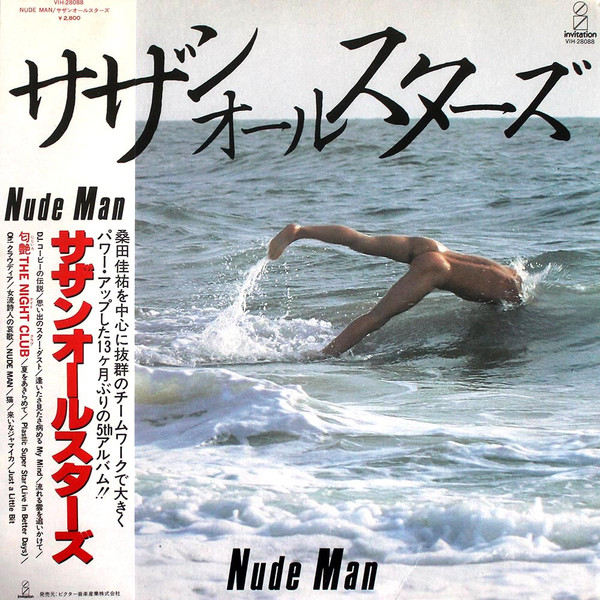Ginji Ito is probably one of the most underrated singer-songwriters in City Pop. He was a key figure for Eiichi Ohtaki's Niagara Records and was responsible for writing the lyrics for the band Sugar Babe's iconic single, Downtown. He even had his own band back in the early 70s called Coconut Bank, but unfortunately, they broke up around 1974, otherwise, they would have been Niagara's first band on their label. That didn't stop Ito from pursuing music, however. On top of joining Tatsuro Yamashita and Ohtaki with their collaborative album, Niagara Triangle, Ginji Ito also joined the Bye-bye Session Band, which was the backing band for the Japanese singer-songwriter, Lily.
It wouldn't be until 1977 when he joined the Warner Pioneer's Asylum label that he would finally get a chance at his first solo album, Deadly Drive. Taeko Ohnuki provided backing vocals as well as lyrics for the song If You Can Be The Wind. Former Sugar Babe Guitarist Kunio Muramatsu provided the composition for the titular song, Deadly Drive. Country Rock band Sentimental City Romane provides backing vocals as well. Other great talents include prolific composer and keyboardist Ryuichi Sakamoto(坂本龍一), drummer and long-time collaborator with Ito, Yukata Uehara(上原裕), bassist Akihiro Tanaka (田中章弘) who's performed in bands like Sugeru Suzuki's Hucklebuck and folk band The Dylan, and percussionist Nobuo Saito(斉藤信男).
THE MUSIC
If You Can Be The Wind (風になれるなら) ⭐⭐⭐⭐⭐
I'm Telling You Now ⭐⭐⭐
Deadly Drive ⭐⭐⭐⭐⭐
Konuka Rain (こぬか雨) ⭐⭐⭐⭐⭐
King Kong⭐⭐⭐
Sucking At That Time (あの時はどしゃぶり)⭐⭐⭐
Sweet Daddy ⭐⭐⭐⭐
Hobo's Lullaby ⭐⭐⭐⭐
THE VERDICT
Overall Deadly Drive is a decent album, most of the songs are fine examples of their respective genres, but don't really do anything to set them apart as unique or outstanding. the best songs are the more light & mellow tracks which fit Ito's vocal style very well. Ginji Ito has very soft and comfy vocals, almost like Michel Franks if he didn’t sound bored half the time, and it pairs well with Taeko Ohnuki's backing vocals.
"If You Can Be The Wind" aims to recapture the magic of Sugar Babe, pretty well with much better production values on top of that. Out of all the jazz-fusion tracks the titular song, "Deadly Drive" has the most personality to it. It’s a high-speed Jeff Beck-style jazz-rock track with some great drum breakdowns, funky guitars, and an immersive driving ambiance that really makes you feel like you are in a car chase out of a scene from the Blues Brothers. "Konuka Ame" is a beautiful rainy-day soul ballad with a mesmerizing piano riff, beautiful orchestral backing, and hauntingly mesmerizing backing vocals thanks to Ohnuki. The 2nd half of the album doesn't leave as big of an impression but the songs are still good. the best one is "Sweet Daddy", a funky jazz number in the style of the Crusaders, complete with a groovy guitar & piano solo, a funky brass section, and some soulful backing vocals. "King Kong" is a mellow funky jazz-rock number with some neat use of the talk-box. "Sucking At That Time" is a pretty standard salsa dance number, and "Hobo's Lullaby" closes off the record with a bluesy country ballad with some soulful piano playing.
Deadly Drive isn't representative of Ginji's later career, but it's a good album to have if you are a Sugar Babe or Taeko Ohnuki fan. It has a more mellow approach to City Pop and is very reminiscent of Ohnuki's early albums, Grey Skies, and even Sunshower, which came out the same year.













